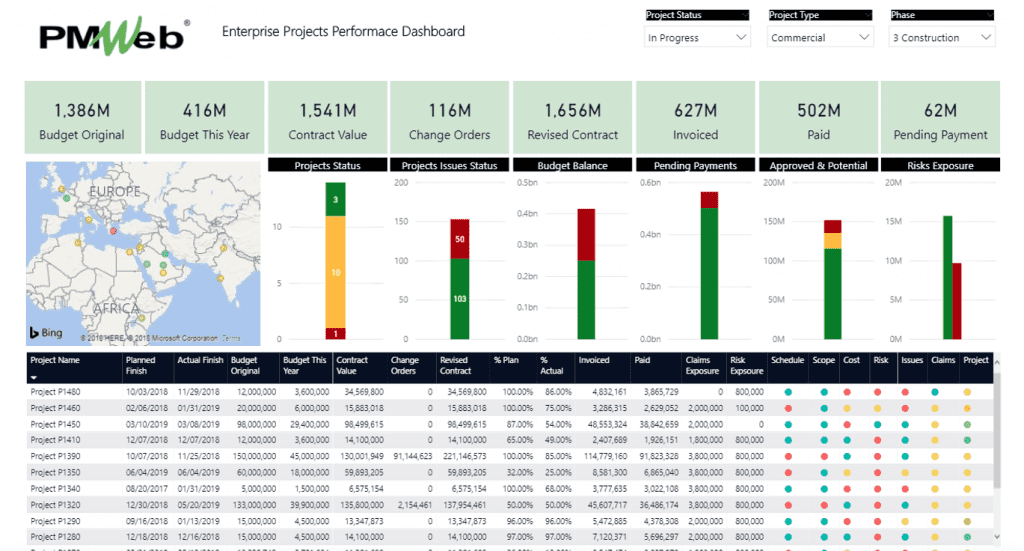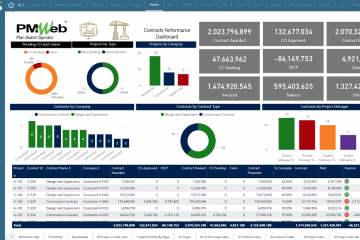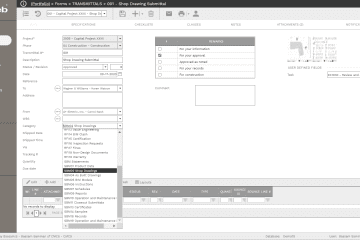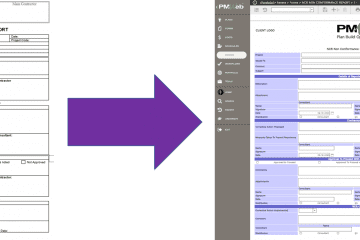A special task force at Harvard University has stated recently that social distancing could be required until 2022 to mitigate the likelihood of another Corona Virus or Covid-19 outbreak in 2024 unless an effective vaccine becomes available. Therefore, social distancing could be something that we need to live with and it will enforce governments across the globe to add more restrictions on international as well as regional travel, meetings in confined spaces among others. This will have an impact on all industries and the construction industry is no exception.
Actually, the management of engineering and construction projects will be drastically impacted by the emerging social distancing regulations as the requirements of co-location, collaboration, meetings and executive presentations are very common on such projects. In addition, the involvement of multiple entities in delivering engineering and construction projects who might have their resources located at different countries as well as regions within the same country will make surviving social distancing even tougher. Add to it the challenge of executive stakeholders who need to have access to reports and dashboards to monitor and evaluate projects performance.
This will require those project entities to come with solutions to respect the requirements of social distancing while delivering engineering and construction projects. One of those solutions is to have a secured web-enabled document access, communication, collaboration, comprehensive and performance reporting practices. Using a project management information system (PMIS) application like PMWeb will enable having this solution.
Adhering to Regulations and Compliance Requirements
Many of the organizations that are involved in delivering capital projects and in particular those in the public sector as well as large corporations, have the requirement for having their projects’ portfolio information stored on their own data centers or other third party data centers like those of local telecom operators, Azure Cloud, Amazon Web Services (AWS) among others. In addition, access to the information stored in the PMIS might sometimes be made available only to authorized users via VPN to ensure compliance with cyber security requirements. Therefore, having the option of a PMIS that can be hosted on-premise like PMWeb becomes a must requirement and not a choice.
Democratizing Access to Project Documents
Remote and secured access to documents that are stored in the project site filing room needs to be provided to the project team members in an easy yet governed format. PMWeb document management module allows creating folders and subfolders that match the exact filing structure that each project could have. Permission to access those folders can be set to enable only authorized access to the stored documents within each folder. The assigned document controller or administrator responsible for managing the filing room will subscribe to each folder to be notified when new documents are uploaded or downloaded, when a new document revision is uploaded, when a document is checked out and checked in and when a document is moved out or deleted.
Embracing Paperless Communications
PMWeb comes ready with most of the formal communications needed on an engineering construction project. Those include for example Request for Information, Meeting Minutes, Transmittals, Safety Incident, Submittals, Punch List among others. Access to those forms will be given to the authorized project team members for which they will be restricted to edit data included in selected fields within each form. Most of those ready to use communication forms have all the possible fields needed to execute those processes including some unique fields like the project schedule activity that could be impacted by the communication as well as the WBS level that this communication relates to. Of course, there is no limit to the additional user defined fields that can be added to those forms which could be text, numeric, currency, date, list of values and Boolean.

In addition to those ready to use forms, PMWeb visual custom form builder allows the creation of unlimited new forms to address all other formal communication requirements on projects. Those custom forms will include all the needed fields and tables with the option to define the access rights for each field and table within the form.
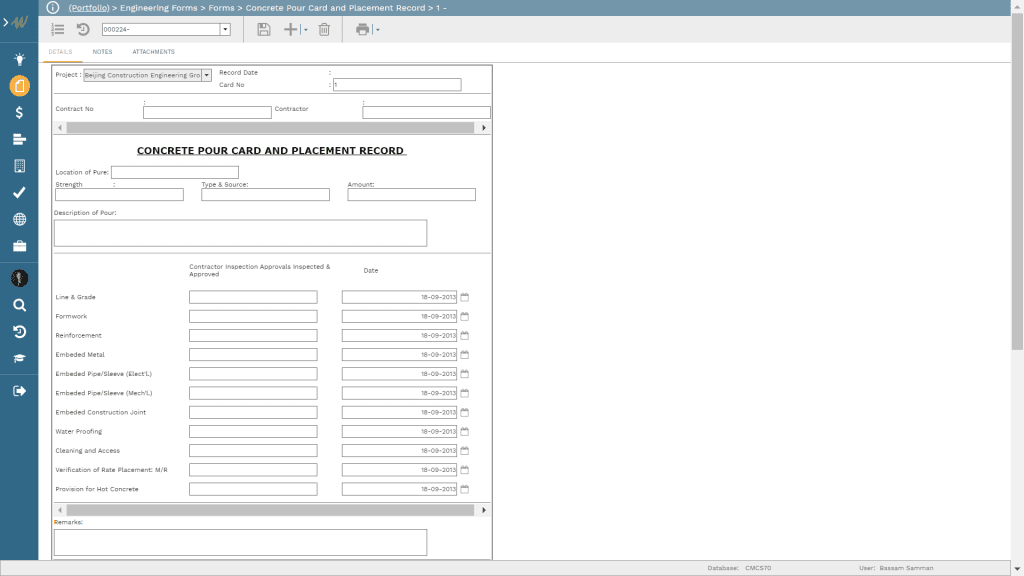
Understanding that some of a project’s formal communications need to be done in the formal local language of the country where the project is being executed, it is a must requirement that the selected PMIS application supports multi-language communication whether those were Latin or non-Latin. PMWeb for example supports such requirement with the ability to not only have those communication forms in any desired language, but also to change the PMWeb interface to match the same selected language. For example, the screen below displays the ISO Audit Checklist communication form and interface in the Arabic language.

Whether default PMWeb form or custom created form, all supportive documents can be attached to the selected form. Those documents can be either stored in the PMWeb document management repository or directly uploaded to the record if needed. In addition, links to other relevant project communications and imported MS Outlook emails which will be stored in PMWeb can be made. Further, hyperlinks to the other locations where documents could have been stored can be done so long as the document integration has been done.
All those project communications can be assigned a workflow to formalize the submit, review and approval process as detailed in the responsibility assignment matrix (RAM) and project management plan (PMP). The workflow will detail the sequence of tasks to be performed by the different project team members as well as the actions can be taken by each and to whom the communication should be returned if it is rejected. Further, the workflow could include conditions to map the approval authority levels. Finally, and to enforce formal communication requirements, PMWeb integration with DocuSign Digital Signature can be used to require selected workflow steps, or all, to be signed digitally using DocuSign.
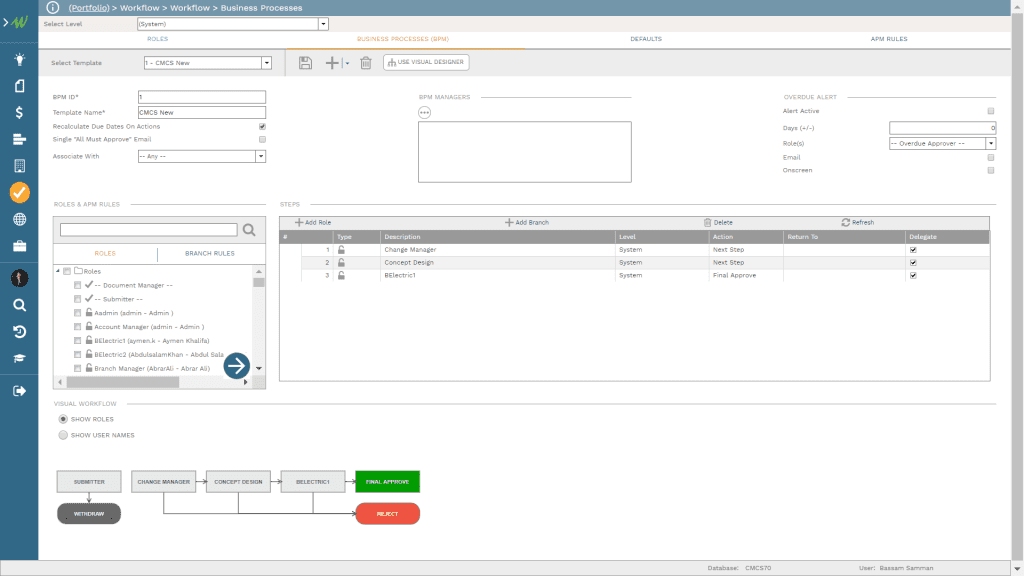
Enabling Remote Collaboration
In addition to the formal workflow sequence, PMWeb allows setting ad hoc workflow for a form to allow informal collaboration. For the selected form, project team members can be invited to collaborate on the form. All comments made by the invited individuals will be captured on the form.

In addition, the project team might need to collaborate on the review and approval of drawings and other project documents that are not created in PMWeb. For this requirement, PMWeb comes ready with its own redlining and markup tools needed when project drawings are reviewed. PMWeb markup tool allows having multiple review layers for each reviewer as well as link PMWeb records to the drawing being reviewed.
Further, PMWeb provides integration with Bluebeam Revu, which is heavily used on engineering and construction projects, to provide the drawings review team with access to the industry standard application when it comes to reviewing and comparing project drawings. Bluebeam Revu allows viewing 2D and 3D drawings saved in PDF file format. PMWeb allows importing, storing and reporting on all comments and remarks made by the reviewers using Bluebeam Revu.
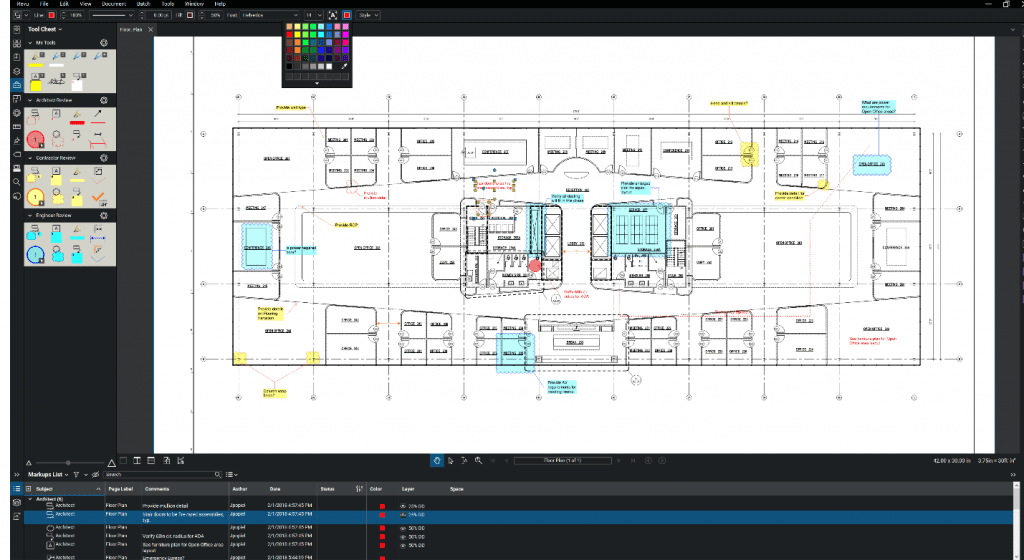
In case there is a need to make a reference for a BIM model, PMWeb BIM Model Manager allows viewing BIM models saved in DFWX file format and uploaded on Autodesk Forge. The project team member can select objects from the BIM model, take a snapshot and attach to selected PMWeb record. Of course, PMWeb BIM Model viewer does not replace the requirement for BIM collaboration applications if the requirement is reviewing and approving BIM models. Those include applications such iConstruct (https://iconstruct.com/) among many others.
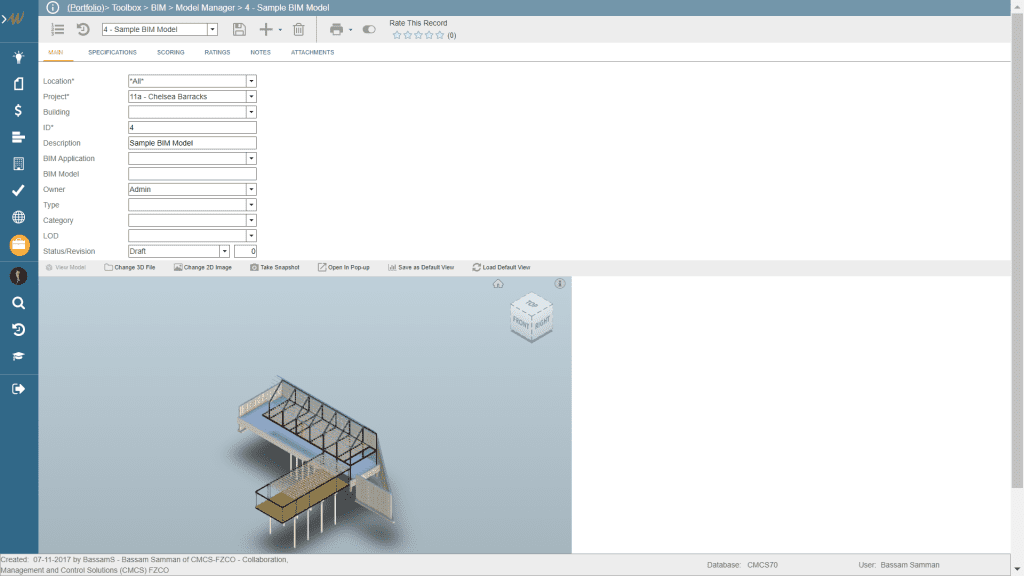
Real-Time Single Version of the Truth Reporting
For stakeholders to trust and believe in the shared performance reports and dashboards, there are a number of requirements to earn this trust, including eliminating any concern they might have if reported information was manipulated or not. This is a valid concern when stakeholders know that the source of the information shared with them was captured and stored in MS Excel where unintentional mistakes and maybe intentional manipulations can happen. To win the trust of those stakeholders, they need to be assured that reported performance information is based on trust-worthy data that was captured using dedicated PMIS applications like PMWeb.
PMWeb will be used to capture the data from all project management processes by their authorized project team members as detailed above. In addition, PMWeb Audit Trail provides details of all activities done in PMWeb by all users. This makes it clear to all project team members that all information they provided is documented and can be verified whenever there is a need to do so. The audit trail also captures the details of login sessions made by the different project team members.
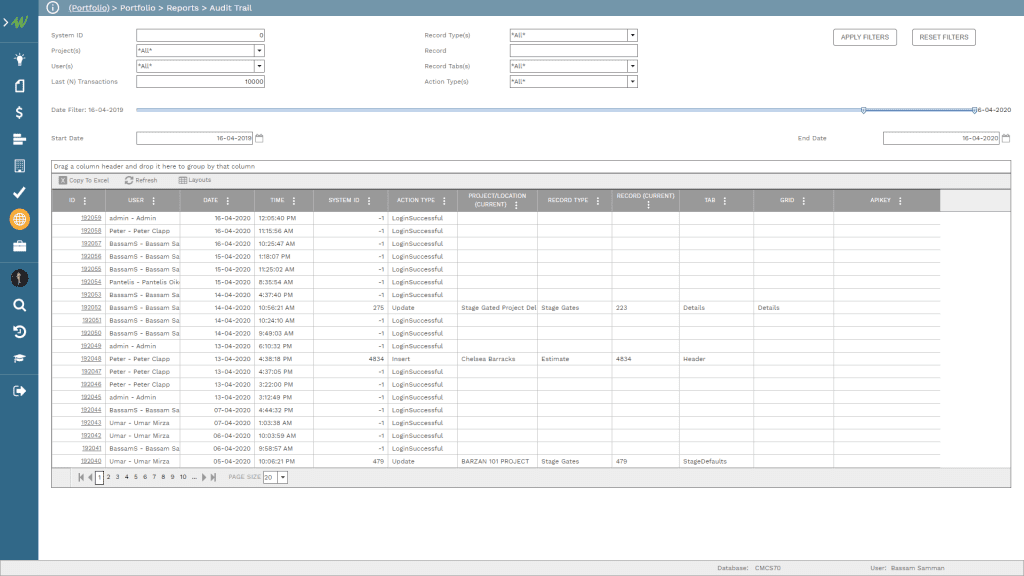
In addition, building the needed trust requires that all project information is available to be reported on and nothing is left out. This information will include the data captured from the processes of everyday project communications, pre-contract and post contract management, cost and financial management, quality assurance and quality control, health, safety and environmental (HSE) management, risk and issue management, procurement, schedule among others. For example, for cost and financial management, PMWeb has ready to use modules for project cost estimate, baseline budget, budget adjustments and transfers, awarded contracts, potential changes, approved and pending change orders, progress invoices, payment made against approved progress invoices, forecast to complete, funding, cost worksheet among others.

This information captured in PMWeb database repository will become the basis for creating the performance reports and dashboards needed by the stakeholders. Those reports and dashboards, which will be accessed directly by the stakeholders, regardless where they are located, will provide real-time single version of the truth information on the current project, program or projects’ portfolio performance. Stakeholders can be even given the permission to drilldown to the data source for the reported information in case they need to verify or simply understand the data behind the reported information.
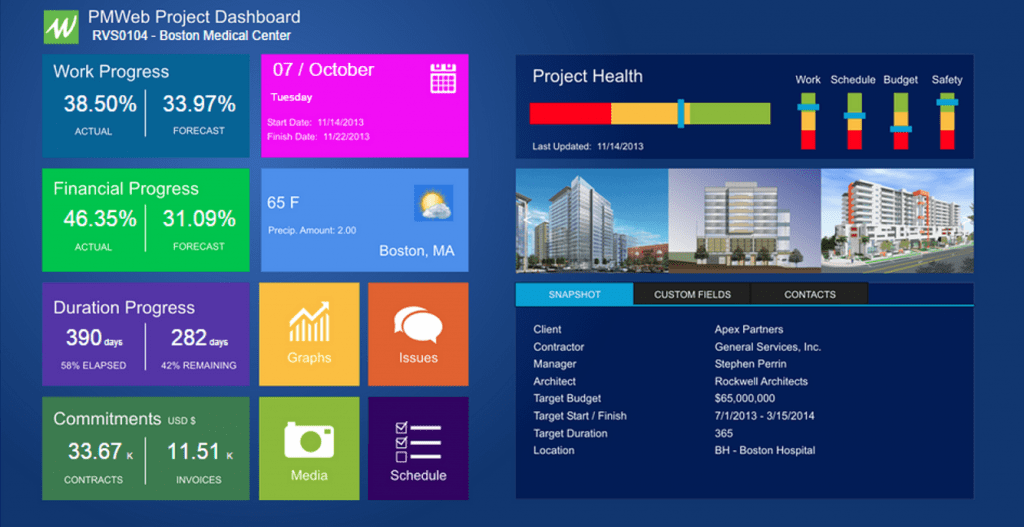
The performance dashboards can also be designed to display pictures of the current project’s performance as well as the option to hyperlink to the IP address of the different construction cameras that are installed on the project site. Those cameras usually have time lapse cameras that come ready with specific features and functions needed for construction projects. The hyperlink can be also created for pre-recorded videos completed using drones or any other type of video camera.
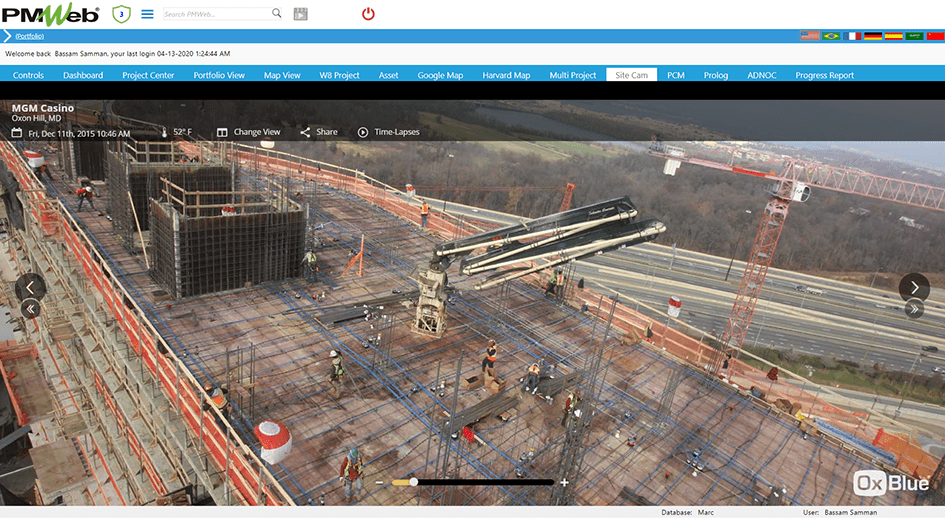
For executive and senior stakeholders who might be interested in visualizing performance dashboards for the complete business which will include data from the PMIS application as well as other applications for finance, human resources, client relationship management (CRM) among others, using data visualization and business intelligence tools like MS Power BI, Tableau, Qlik among others will be required. All those data visualization and business intelligence tools comes ready with date extract, load and transfer (ETL) capability to enable reading PMWeb data and associate and blend the PMWeb data with other applications to provide the ultimate performance dashboards needed by those executives.
